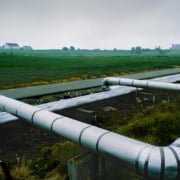
U.S. EPA Announces Fourth Update to Environmental Justice Mapping Tool: EJSCREEN 2.3

On July 9, 2024, the U.S. Environmental Protection Agency (EPA or Agency) announced a fourth update to its environmental justice (EJ) mapping and screening tool, EJSCREEN, under the Biden administration. EPA describes the tool as “a starting point for agency considerations of environmental justice” and generally uses the tool to identify areas that may have higher environmental burdens and inform several Agency functions, including permitting, enforcement, outreach, and compliance.
The main purpose of these frequent EJSCREEN updates is to incorporate the most recent data for demographic and environmental datasets. Upon release of an update, the previous EJSCREEN version is no longer available.
Past EJSCREEN Updates
EPA’s first update to the tool, in February 2022, EJSCREEN 2.0, added new indicators including an environmental indicator on underground storage tanks; a socioeconomic indicator on unemployment; a health indicator based on life expectancy, asthma, and heart disease based on data from the Centers for Disease Control and Prevention; indicators on “critical service gaps,” including food deserts, medically underserved areas, and areas with limited broadband internet access; and a climate change indicator with data on droughts, sea-level rise, and wildfires.
The second update, in October 2022, EJSCREEN 2.1, integrated demographic data from the 2016–20 American Community Survey (ACS) and added environmental, demographic, and index data for U.S. territories, including the U.S. Virgin Islands, Guam, American Samoa, and the Northern Mariana Islands. The update also included a mapping function that allowed users to review multiple EJ indices simultaneously, which EPA intended would provide “a cumulative” view of burdens on EJ communities.
The third update in June 2023, EJSCREEN 2.2, integrated more recent demographic data from the 2017–21 ACS data, added a new indicator on Toxic Releases to Air, which quantifies the relative potential human health effects from exposure of Toxics Release Inventory chemicals; and added new map layers indicative of heath disparities, critical service gaps, and EPA-regulated facilities that are or have been out of compliance with environmental laws and regulations.
EJSCREEN 2.3 — EPA’s Fourth Update to EJSCREEN
Among other features to improve the interface of the tool, EJSCREEN 2.3 reincorporates the ability to produce ACS reports and includes the following updates:
- integrates more recent demographic data from the 2018–22 ACS
- adds new environmental indicators on (i) nitrogen dioxide, using NASA satellite data to display average annual nitrogen dioxide levels, and (ii) drinking-water noncompliance, using modeled drinking-water system boundaries and overlaying Safe Drinking Water Act violations of water systems
- adds new map layers including (i) extreme heat potential, describing the average number of days over 90 degrees per census block group; (ii) private domestic drinking wells by count, density, and percentage of population served; (iii) drinking-water area boundaries that describe the geographic extent of community water system service areas; (iv) air toxics cancer risk based on EPA’s AirToxScreen; and (v) EJ grants and resources provided through the EPA Office of Environmental Justice and External Civil Rights
- changes the existing indicator on Superfund Proximity to use site boundaries (when available) rather than “points” for the calculations and representation of the sites and moves the air toxics datasets on cancer risk and respiratory hazard index from environmental indicators to the “places” tab to better represent the data
- reformulates the supplemental index to include disability data
EPA is providing virtual trainings and “office hours” to help the public best understand how to use and apply the tool. The next training will be held on July 24, 2024, at noon EST.
This post is as of the posting date stated above. Sidley Austin LLP assumes no duty to update this post or post about any subsequent developments having a bearing on this post.



